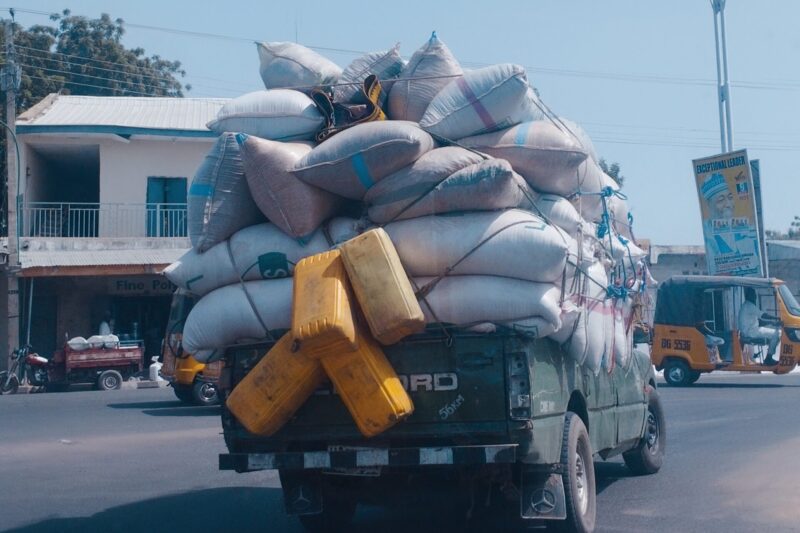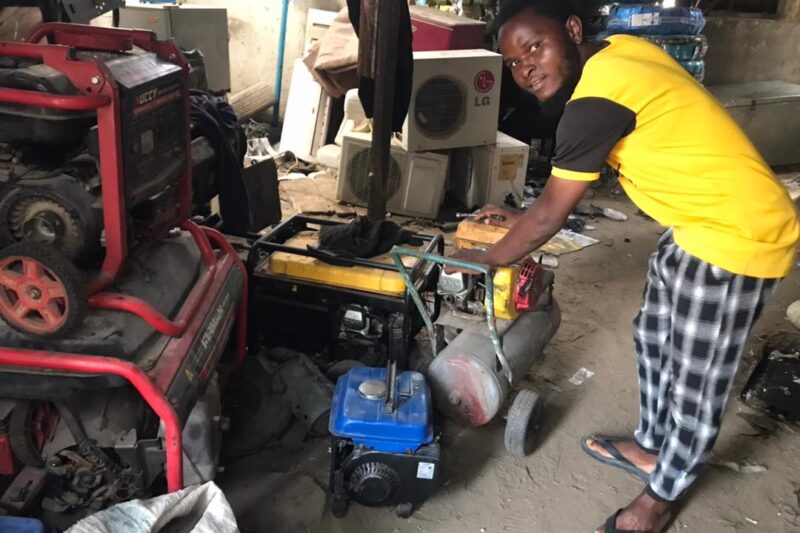Insecurity, erratic rainfall, the removal of the fuel subsidy, high demand and lack of timely support from the government blamed for sudden rise in the price of locally produced rice.
Insecurity and the erratic rainfall during the wet season are two of the major factors for the price of locally produced rice to skyrocket.
And residents of Maiduguri in Borno State aren’t impressed. Rice is one of the staples foodstuffs in most households.
Residents blamed the exorbitant cost of living on the removal of the fuel subsidy by President Bola Ahmed Tinubu on July 1. Fuel prices went through the roof and transportation costs soared. This caused prices of all commodities to increase.
However, the high demand for rice and the lack of timely support from both the federal and Borno State governments also contributed to the rise in the price of locally produced rice, the residents said.
Grema Bukar, who lives in Maiduguri, told RNI that the local rice was so expensive in the market now that poor and low-income earners could no longer afford it.
“One plate of local rice now costs between ₦1,200 and ₦1,300. This has made it difficult to buy a bag for the family. The prices of all commodities have soared. It’s making our living conditions extremely difficult. We are all struggling to put food on the table.”
Abba Mohammed Alhaji Kura, also from Maiduguri, said local rice was cheaper than “foreign” rice and that’s why most poor people bought it.
“They have no choice. But now, suddenly, the price of locally produced rice has soared in the markets. A man needs to spend more than ₦15,000 to get enough local rice to keep his family going. That will last for about three or four days.”
Mustapha Mohammed, chairman of Rice Sellers’ Association at the Gamboru Market in Maiduguri, told RNI that the price of local rice had increased because of high demand, low circulation of money among potential buyers, the high cost of living and the unavailability of locally produced rice in Borno State.
“Because of this we have had to bring in local rice from other states, such as Gombe, Kano, Katsina and Taraba. Transportation costs are so expensive and that adds to the price of rice and other goods at the market. We are forced to increase the costs of all commodities because transportation is so high. We need to make some profit.
“The price mostly depends on whether we had to buy it and bring it in from other places. That’s where the price of transportation comes in. So, it’s quite flexible. We sell a bag of local rice from ₦60,000 to ₦67,000 to ₦70,000. And our retailers sell one plate of local rice at between ₦1,200 to ₦1,300.”
Alhaji Goni Modu, chairman of the Borno State chapter of the Rice Farmers’ Association of Nigeria (RIFAN), said most rice farmers in Borno State and other parts of the country were hit by the low rainfall during this year’s wet season.
“Last year we had floods, this year we have hardly had a drop of rain. Farmers planted their crops and then stood by watching them curl up and die. Most rice farmers ended up with extremely small harvests. Some with none.
“They also had to put up with a noticeable increase in the number of attacks by insurgents. Many of our farmers were attacked – particularly in the north of the country. The number of attacks was much higher than the previous year. This resulted in many farmers not even going to their lands because they knew they could be the next ones killed. This resulted in low production and shortages.”
Modu said that rice farmers received support from the federal government, which provided agricultural farming implements – such as water pump machines and varieties of seedlings, among others – through the Central Bank of Nigeria’s Anchor Borrowers’ Programme (ABP) to boost the production of local rice.
“But,” he said, “often the timing was out and the provisions arrived too late. This had affected the rice farmers’ ability to carry out their agricultural activities. This is another reason for the shortage of locally produced rice which has resulted in the unavailability of local rice in markets.”
The former president, Muhammadu Buhari, formally launched the Anchor Borrowers’ Programme (ABP) in November 2015. Its broad objectives, according to the Central Bank of Nigeria, were fourfold: to increase the bank’s financing for agriculture; reduce the national food import bill; create a new generation of innovative and “smart” farmers; and deepen financial inclusion by helping smallholder and subsistence farmers to become commercial farmers.
But the ABP initiative had suffered serious setbacks in terms of its implementation, particularly in northern part of the country, mainly because of the increased insecurity in the region. The bank was aware that farming had become a risky business. There had been – and continue to be – a growing number of attacks on farmers by bandits but, more importantly, by members of the insurgent groups, the Islamic State West Africa Province (ISWAP) and the Jamā’at Ahl as-Sunnah lid-Da’way Wa’l-Jihād (JAS), better known as Boko Haram.
This year kidnappings for ransom were common and many farmers had been killed on their lands. The insurgents often imposed “taxes” or “levies” on farmers, allowing them to plant crops on their own lands. If they did not pay, they were kidnapped or killed or used as slaves in the hideouts, usually deep in the forests. They disrupted farming, seized farm produce and imposed heavy levies on farmers and communities.
On November 5, RNI reported that at least 13 rice farmers were murdered by insurgents in Zabarmari in the Mafa Local Government Area of Borno State.
A civilian joint task force (CJTF) member, who asked to remain anonymous, had told RNI that the attack occurred in the afternoon on Sunday, November 5, while the farmers were harvesting their crops.
The highways and markets were also not safe, which resulted in farming, harvesting, storage and transporting of produce being unprofitable. In some areas there were conflicts between herders and farmers.
A farmer, who asked to remain anonymous, said that the conflict with herders and insurgents had forced many farmers to leave their lands.
“If it’s not insurgents, then it’s herders who allow their cattle to trample and eat our crops, leaving us with nothing to harvest.”
SHETTIMA LAWAN MONGUNO








